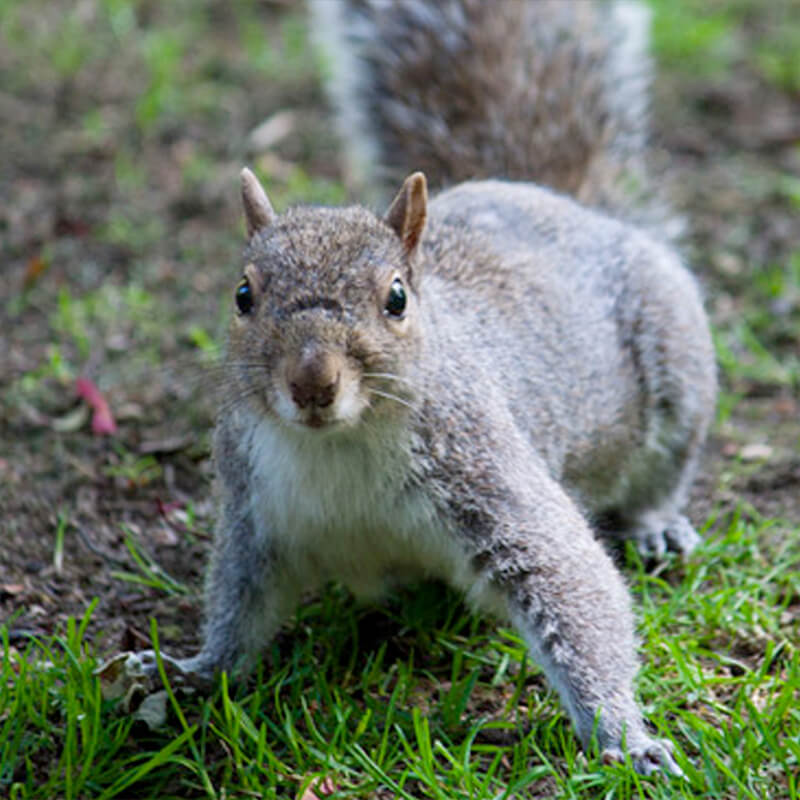Squirrels living in both the wild and urban areas build large nests in trees using twigs and leaves for nesting material. In urban areas, they make nest around chimneys, attics, walls, garages, shed roofs, squirrel found in parks and woodland areas, they adapt quite easily to urban environments, taking up residence in and around buildings. In late winter and summer, a string of male squirrels may be seen pursuing sexually mature female squirrels in a noisy, energetic chase through the treetops, on rooftops and on the ground. This chasing behaviour is thought to be a vital phase of squirrel courtship. During the mating process, the male squirrel excretes a wax plug that obstructs the female’s vagina and prevents further mating by other males.
Twice a year, about 42 days after mating, the female gives birth to a litter of 1 to 7 young with the average urban litter being 5 or 6 youngsters. Baby squirrels do not open their eyes until 32 days after birth. Squirrels born in the spring are forced to fend for themselves at the age of 10 to 12 weeks. However, baby squirrels born in the fall usually stay with their mother until late winter when she breeds again.




